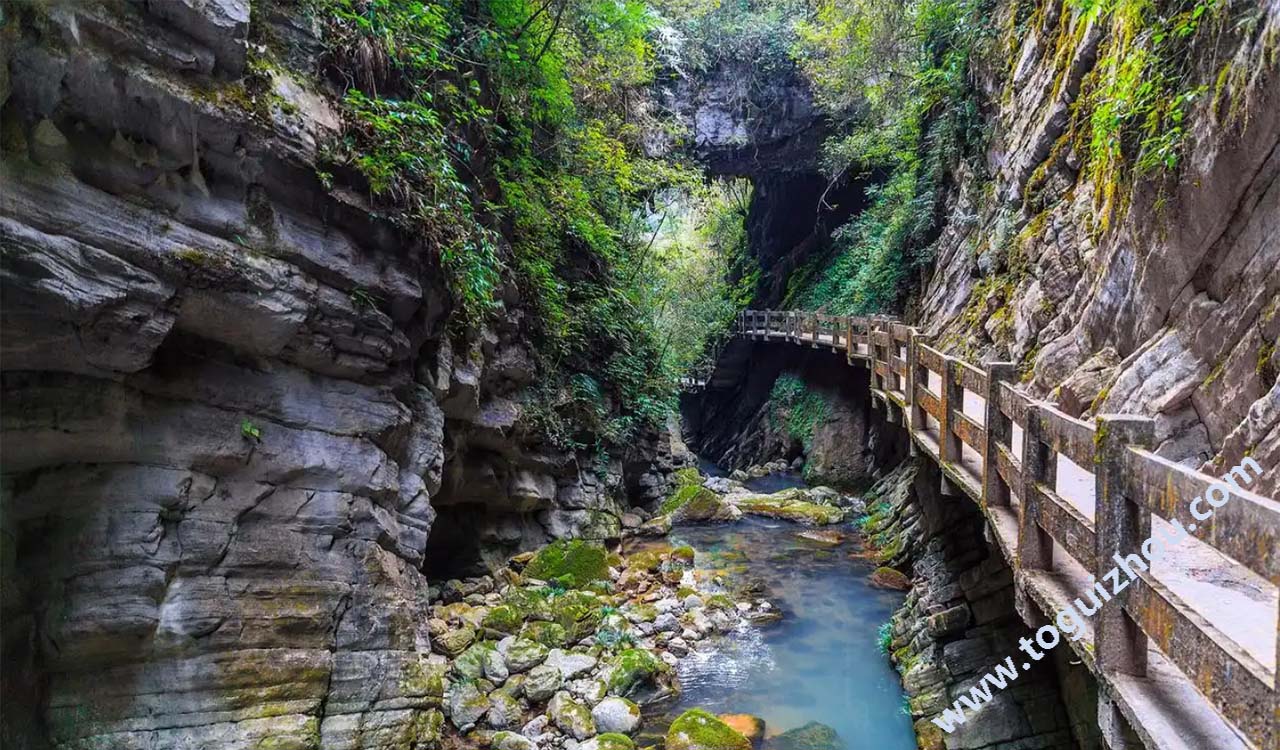Nanjiang Grand Canyon is a famous scenic spot in Guizhou Province, China. It is located in Kaiyang County, about 40 kilometers away from the urban area of Guiyang. With its unique karst landform and rich ecological resources, it has become a popular tourist destination, attracting a large number of tourists at home and abroad every year.
Geological Features
Origin:The formation of Nanjiang Grand Canyon is closely related to the long-term geological movement and water erosion. Due to the uplift of the crust and the continuous scouring of the Nanjiang River, this deep and magnificent canyon was gradually formed over millions of years.
Scale:The canyon is more than 40 kilometers long, with a depth of 300 to 500 meters in some sections. The cliffs on both sides are steep, and the river in the canyon is rapid, showing a spectacular natural landscape.
Landforms:There are various unique karst landforms in the canyon, such as karst caves, stone forests, and waterfalls. These landforms are not only of great ornamental value but also of important scientific research value, providing valuable materials for the study of karst geology.
Natural Scenery
Waterfalls:The canyon is rich in waterfall resources, with many waterfalls of different sizes. Among them, the more famous ones are the Luohan Waterfall and the Baima Waterfall. The Luohan Waterfall is like a white practice hanging from the sky, with a drop of dozens of meters. The water splashes and makes a deafening sound, which is very spectacular. The Baima Waterfall is like a white horse galloping, with magnificent momentum.
Streams:The Nanjiang River runs through the whole canyon. The water is clear and the current is rapid. Along the way, there are clear pools and rapids. The water quality is excellent, and you can see the pebbles and fish at the bottom of the water. When boating on the river, you can feel the coolness and comfort of the water, and enjoy the beautiful scenery on both sides.
Forests:The canyon is covered with dense primeval forests, with a large number of rare plants and animals. The forest coverage rate is as high as over 90%. The ancient trees are towering, and the vines are intertwined. It is a natural oxygen bar. Walking in the forest, you can hear the birds singing and smell the fragrance of the flowers and plants, feeling the magic and beauty of nature.
Cultural and Historical Value
Ethnic Culture:The Nanjiang Grand Canyon area is inhabited by many ethnic groups such as the Miao and Bouyei. These ethnic groups have their own unique cultures and traditions, such as folk songs, dances, and handicrafts. The unique ethnic customs add a rich cultural connotation to the canyon.
Historical Sites:There are some historical sites in the canyon area, such as ancient post roads and ancient battlefields. These sites witness the changes of history and have certain historical and cultural value.
Tourism Activities
Hiking:There is a well-built hiking trail in the canyon, which allows tourists to walk into the canyon and get close to nature. Along the way, you can enjoy the beautiful scenery of the canyon, feel the fresh air and the vitality of nature.
Rafting:The rapids in the canyon provide good conditions for rafting. Rafting on the Nanjiang River, you can experience the excitement and passion of fighting against the rapids, and enjoy the unique charm of the canyon from a different perspective.
Camping:There are some designated camping areas in the canyon, where tourists can camp, enjoy the starry sky at night, and listen to the sounds of nature. It is a great way to get close to nature and relax.



